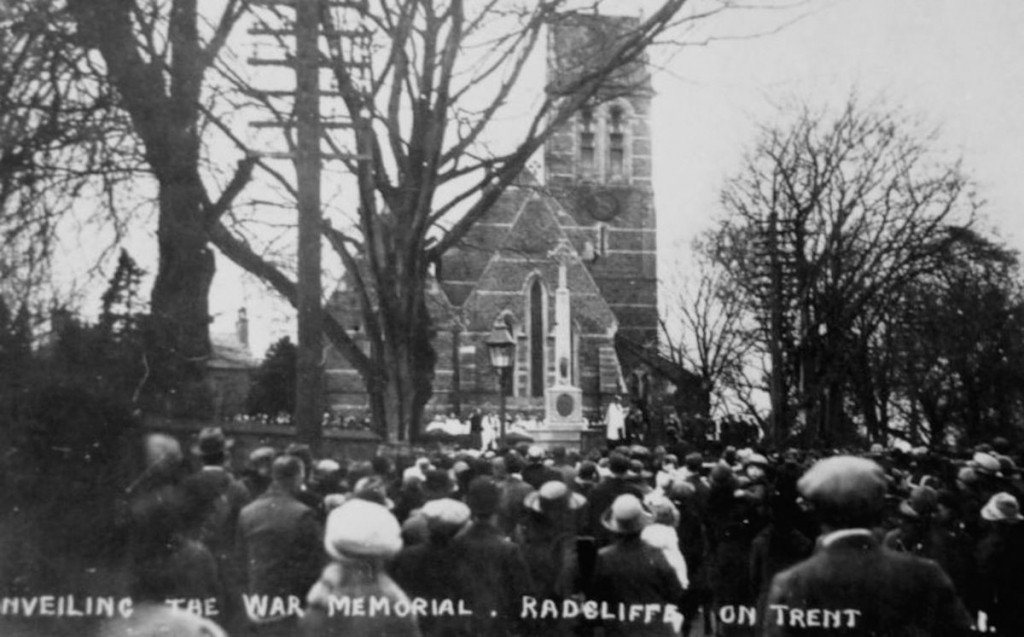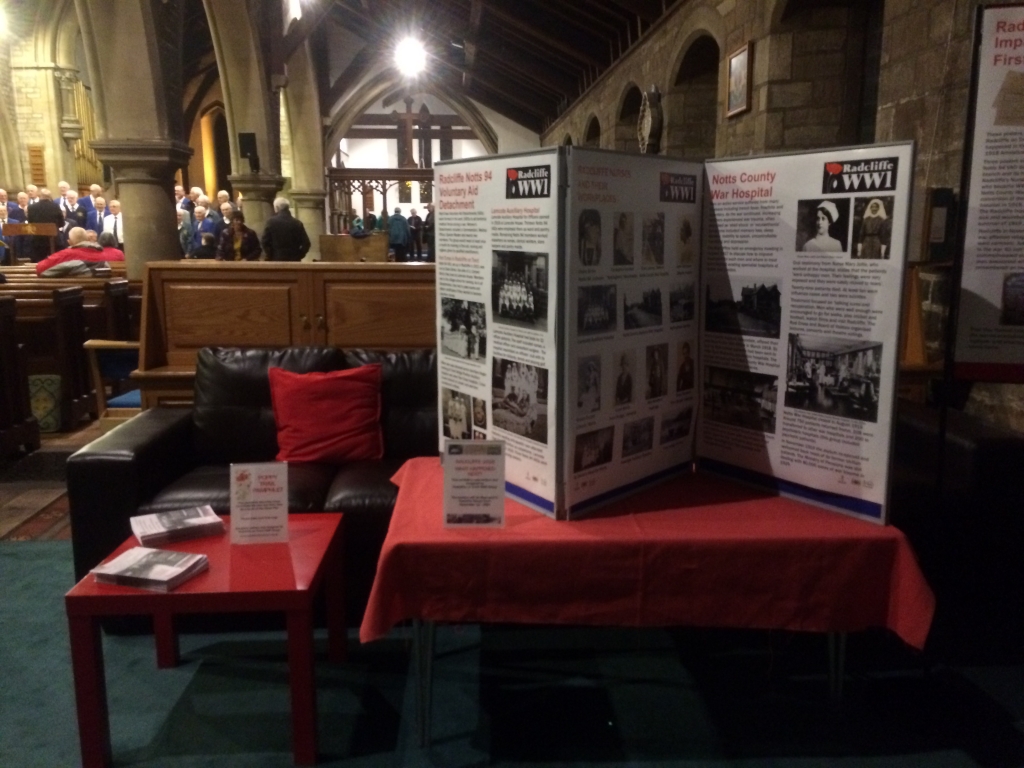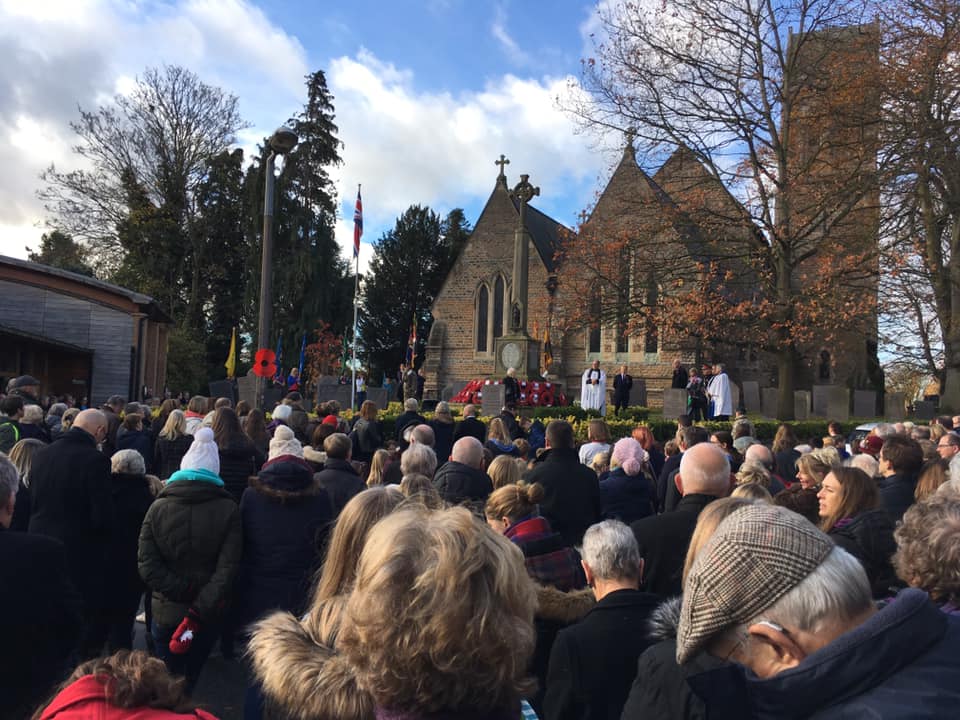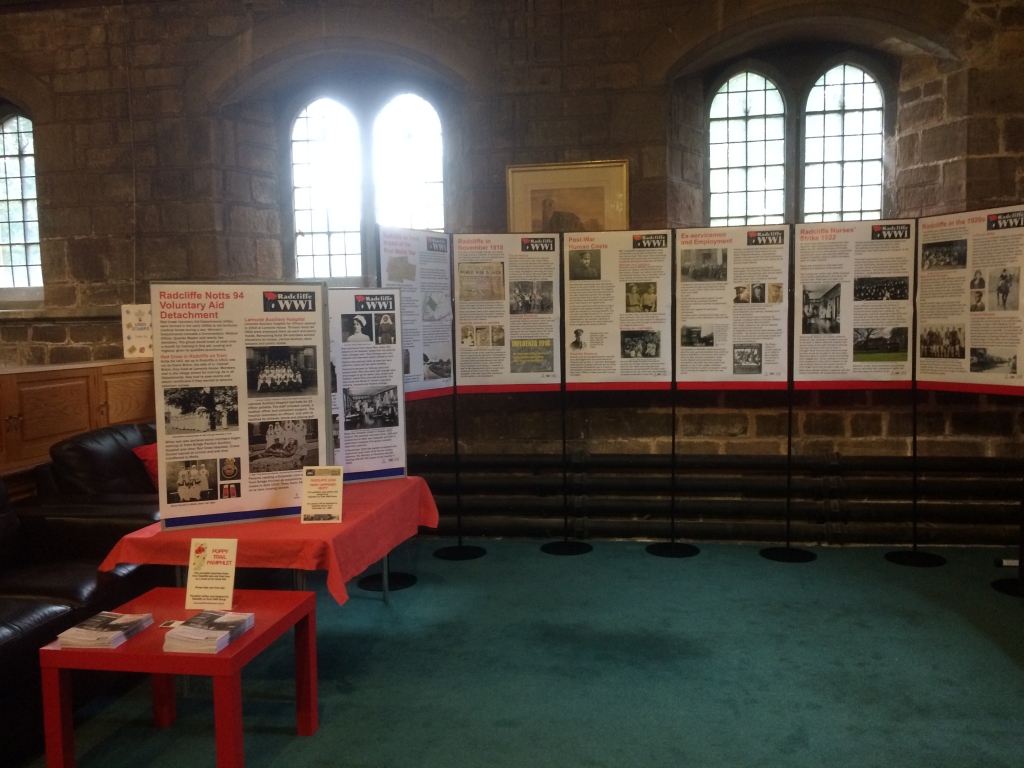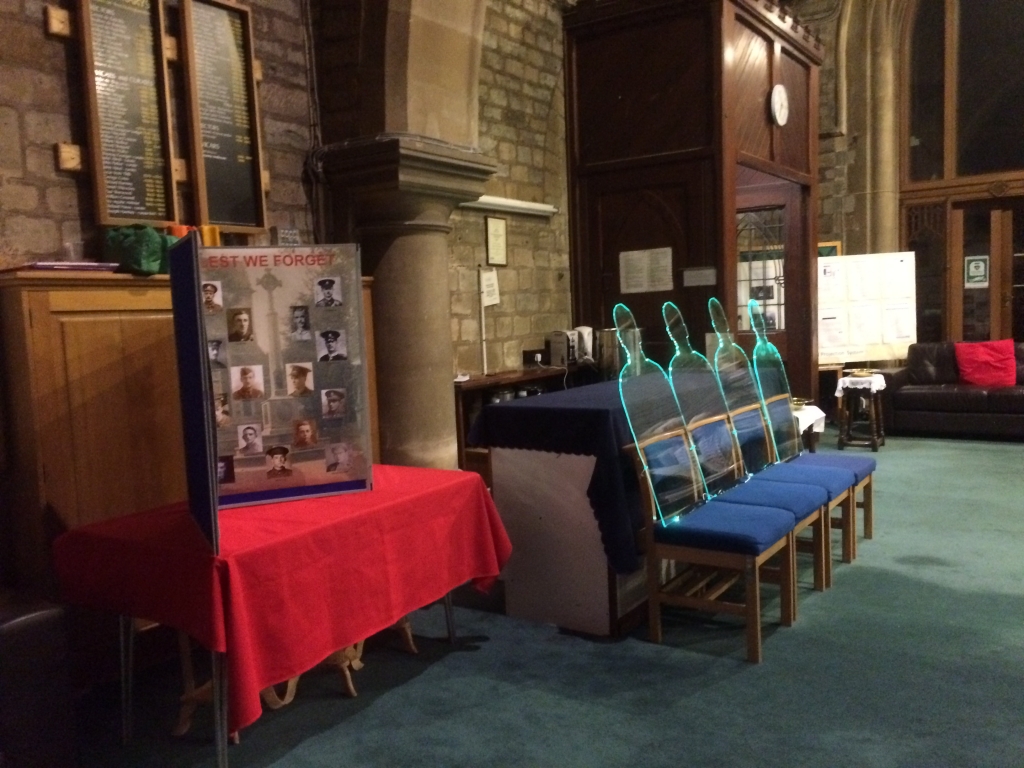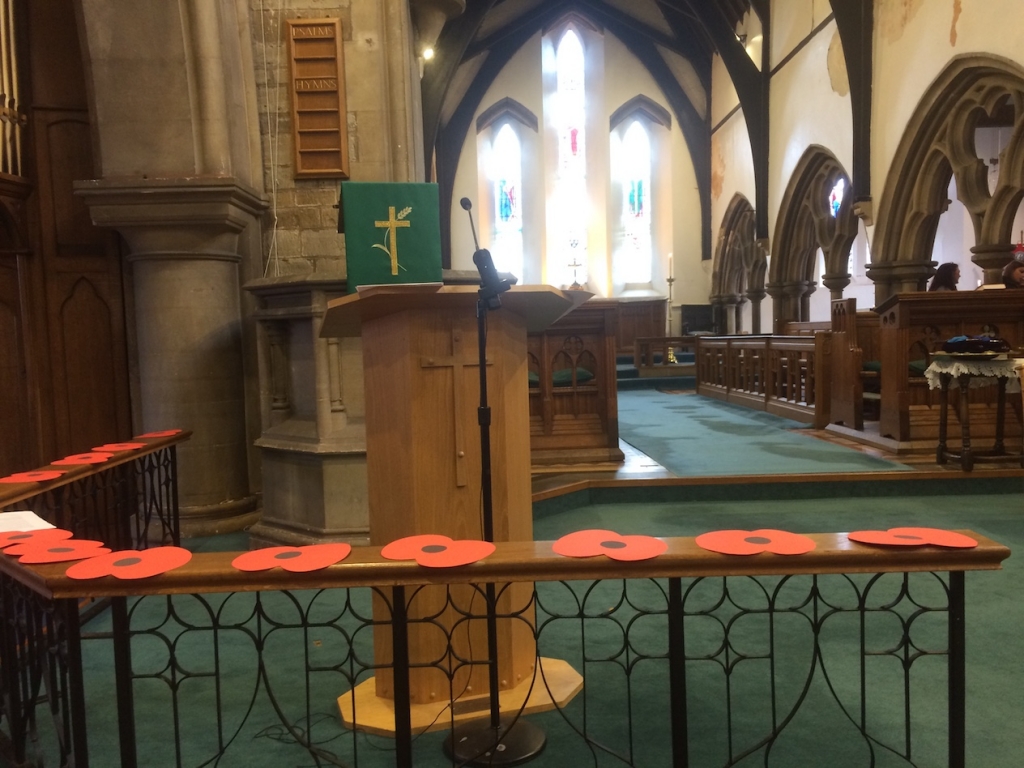St Mary’s Church and the Great War Centenary
St Mary’s Church, Radcliffe on Trent, has been a focal point for the community since the eighteenth century. At the time of the First World War, the church had a heightened role. Collections at Sunday Services helped to support the war effort. Ten military funerals, conducted by the Reverend Cecil Smith, were held between 1915 and December 1918. Eighteen baptisms took place of babies whose fathers were on active service; two of these men were to lose their lives as a result of the war. Bells rang out from the church on November 11th 1918 and a thanksgiving service was held that day. Twelve months later the bell ringers rang the bells for three and a half hours as a final welcome home to surviving servicemen. Soon after the Armistice the church was the venue for many marriages between ex-servicemen and their fiancées. One of the first weddings, held on December 17th 1918, was between Lt. Douglas Blew Jones, a patient at Lamcote Auxiliary Hospital for Officers, and Violet Birkin. She was the daughter of Lt. Colonel Birkin, former commanding officer of the 1/7th Sherwood Foresters. A guard of honour composed of patients, sisters and nurses from the hospital lined the carpeted approach to the church.
In 1921 the war memorial was unveiled in the churchyard. The ceremony was witnessed by most people in the village, including around two hundred and fifty ex-servicemen. Sixteen men listed on the memorial were baptised at St Mary’s as children.
There is another WW1 memorial inside the church. The Communion Table in the Lady Chapel was donated by Radcliffe branch of the Church of England Men’s Society. The Table has a Lamb of God motif on the front panel above an inscription: ‘The C.E.M.S. Memorial to those who gave their lives in the Great War 1914-1918’. The names of servicemen on the external memorial in the churchyard are listed alphabetically on the side panels: William Barratt – Cecil Ingram are inscribed on the southern end of the table and Percy Kitchen – Henry Voce on the northern end.
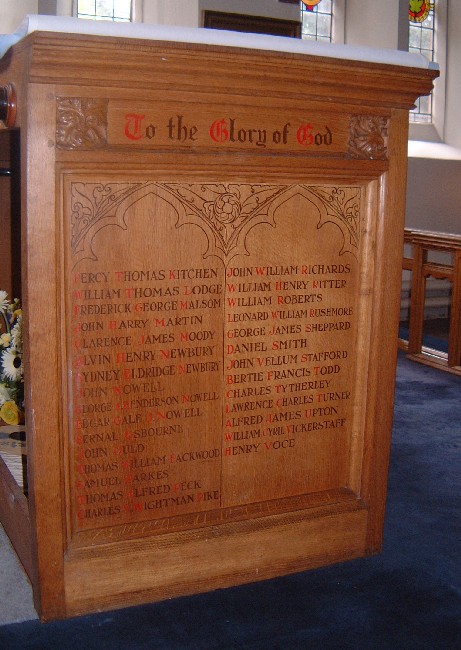
Communion Table, St Mary’s Church
A special vestry meeting on 15th September 1918 resolved ‘that this meeting approves the erection of a memorial tablet by Mrs. C. W. Pike in memory of her husband the late Charles Wightman Pike’. The plaque is situated in the North aisle from the west end.
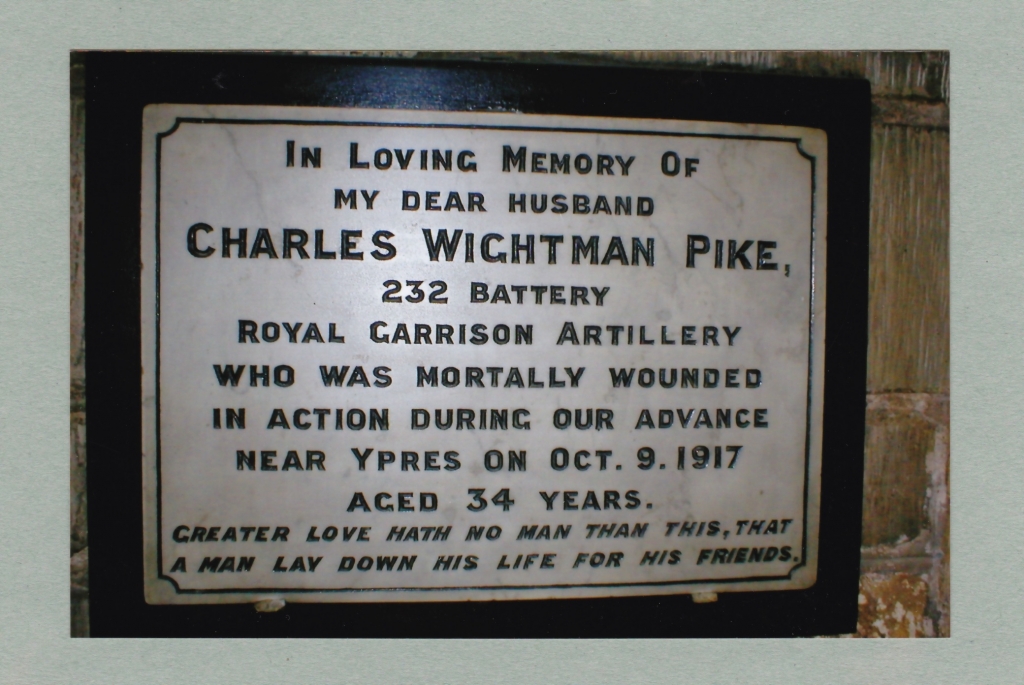
Memorial to Charles Wightman Pike, donated by his wife Agnes
St Mary’s Church played a principal role in commemorating the centenary of the Armistice in November 2018. A concert was held at the church on November 8th 2018 featuring Radcliffe Male Voice Choir, the Bridge Singers and seventeen year old flautist Katie Miller. Katie’s exquisitely rendered solo pieces included the Minuet from ‘L’Arlesienne’ by Bizet, ‘Humoresque’ by Dvorak, ‘The Girl with the Flaxen Hair’ by Debussy and a WWI medley. The harmonious Bridge Singers captured the spirit of the times by incorporating pre-war songs by Wood and Vaughan Williams into their repertoire as well as Cole Porter’s upbeat ‘Let’s Do It’ from the 1920s.
Radcliffe Male Voice Choir’s well-executed repertoire ranged from Elgar’s optimistic ‘Land of Hope and Glory’, whose words were written in 1902, to post-war songs of sorrow and reconciliation such as Eric Jones’s ‘The Peacemakers’. The Male Voice Choir’s rendition of WWI songs and Katie Miller’s medley conjured up the British Tommy’s humour and courage while the Bridge Singers’ evocative performance of Gruber’s ‘Stille Nacht’, sung on the Western Front by both sides in Christmas 1914, was a poignant reminder of shared suffering. The elegiac ‘Blue Bird’, rendered superbly by Lynne Holland, and the Male Voice Choir’s signature piece ‘Gwahoddiad’ brought to mind the horrors of war experienced by millions. The music was interspersed by period readings from Radcliffe WWI Group, which were written by Radcliffe people about their war-time experiences.
A memorial service was held on November 11th 2018 following a parade through the village and laying of wreaths by local dignitaries and organisations. There was a huge crowd in attendance, just as there was when the memorial was unveiled in 1921. The congregation was able to view Radcliffe on Trent WWI Group’s poster exhibition in the church which revealed the impact of the war on the village. It covered a wide range of post-war topics including the influenza pandemic, the economic crisis of the 1920s, the nurses’ strike at Saxondale and Radcliffe’s first council houses.
Radcliffe on Trent WW1 Exhibition at St Mary’s Church
The exhibition was accompanied by ten ‘There but not there’ silhouettes donated to Radcliffe Parish Council by the charity ‘Remembered’, which supports veterans. Four silhouettes were placed at the west end of the church, four in the chancel and two in the transept windows. The silhouettes were illuminated by Radcliffe on Trent WWI group who had been shown how to do so by staff at St Mary’s Church, Nottingham. The groups of four signified the servicemen whose stories the Radcliffe WWI Group told at the Armistice service: Frank Barratt Daniels, Sydney Newbury, William Vickerstaff and Lawrence Turner, who are among those inscribed on the war memorial.
‘There but not there’ silhouettes
Eighty-four local men and one woman on active service lost their lives as a result of the Great War. Sixty-one are commemorated on Radcliffe War Memorial and the remainder are largely remembered on memorials elsewhere. During the service, conducted by Canon Mark Tanner, children placed eighty-five poppies around the church to commemorate those who fell. Afterwards, the bell-ringers rang a half muffled peal in honour of those who had died serving their country.
Poppies laid by children in St Mary’s Church
St Mary’s Church has been a silent witness to innumerable events connected to the Great War for over a hundred years. It is fitting that it played a central part in the centenary commemorations.
Rosemary Collins

